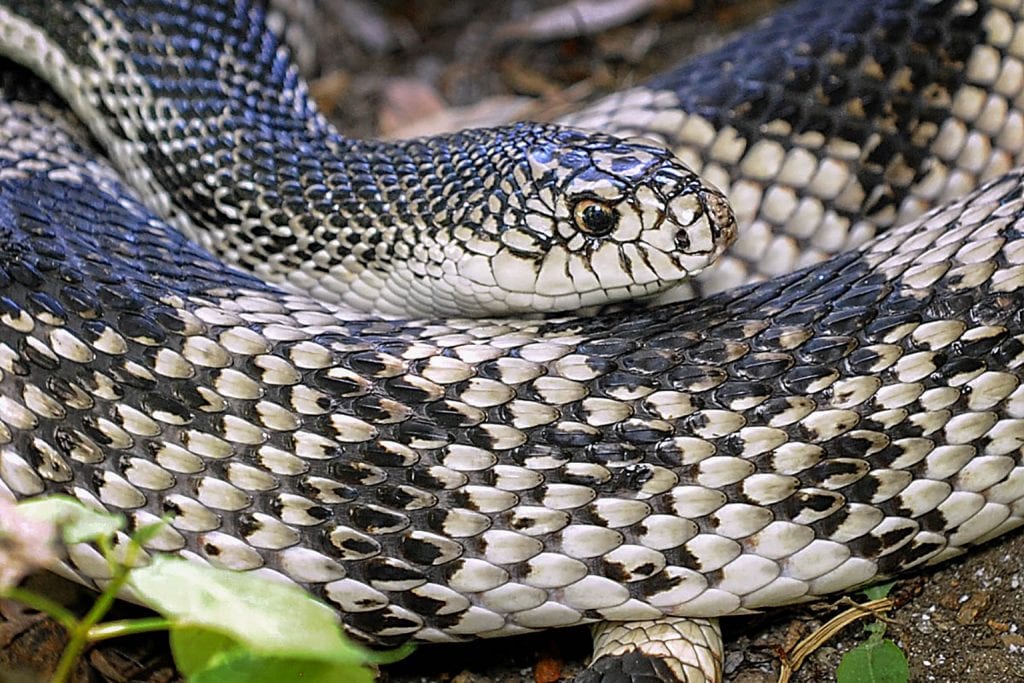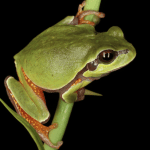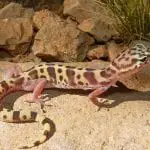Scientific Facts
| Common Name | Pine Snake |
| Scientific Name | Pituophis melanoleucus |
| Natural Habitat | Pine forest, woodlands, cultivated field, open brushland, and rocky desert |
| Diet | Rats, mice, moles, eggs and other small mammals |
| Breeding interval | Once yearly |
| Size | 48–90 in (120–230 cm) |
| Weight | 4-8 lb (1.8-3.6 kg) |
| Color | Color: A light background color blotched with brown, black, or brownish-red |
Physical Description
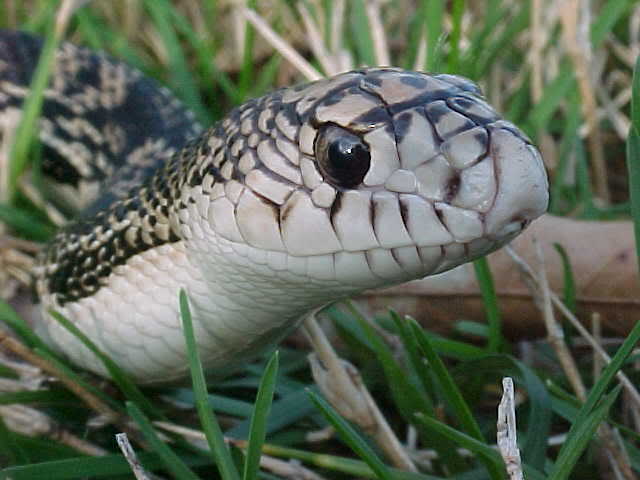
Pine snakes are fairly heavy-bodied snakes that are large in size. They have a small head that resembles that of a turtle with a snout that is pointed and protrudes over the jaw. Their color ranges from yellow, white, or light gray with dark and squarish blotches on the head towards the tail.
Their scales are rough to touch also known as keeled, unlike other snakes that have smooth scales. They have keeled scales of about 27 to 37 rows that are only staying in a single anal plate.
You can easily distinguish a male and a female Pine Snakes through their tails. The males tend to have tails that do not taper easily.
Where it is Seen?
These species are mostly found in the United States in Florida, Georgia, Alabama, Mississippi, New Jersey, North Carolina, Kentucky, Louisiana, Mississippi, New Jersey, North Carolina, South Carolina, Virginia, Tennessee, and Delaware.
Habitat
The pine snake inhabits pine Flatwoods, longleaf pine, turkey oak forest, prairies, sandy pine-oak woodlands, cultivated field, open brushland, chaparral, and rocky desert. It requires well-drained, sandy soils with little vegetation for hibernation and nesting purposes. They remain underground during the summer season and in cold weather. It prefers open canopies that are most common in sandy pine barren and sandhill habitats.
Behavior and Temperament
Pine Snakes are excellent burrowers that spend the majority of their lifetime underground they only bask under the sun for their body temperature to rise to keep their body warm all throughout the day. Their pointed snout is used for burrowing, finding prey and building nests. They can hiss with an amplifying sound due to its cartilaginous keel in front of the glottis to intimidate potential predators. When they feel threatened, they will hiss loudly, inflate their head and body and eventually strikes.
Eating Pattern
The Pine Snake preys on mice, rats, moles, eggs of other snakes and small mammals. They often enter the burrows of other burrowing rodents in search of a meal. They are only given a meal at least once per two weeks to avoid being overweight and obese.
Size and Weight
Pine snakes are large, growing to 48–90 in (120–230 cm) in total length with a weight of 4-8 lb (1.8-3.6 kg). Males and females do have the same range for their size and weight it would just greatly depend on their diet and environment
Lifespan
There is no specific information about the exact lifespan of a Pine Snake but in captivity, the oldest Pine Snake that is on record lived to be 22 years, 5 months, and 1 day old. It is quite difficult to achieve a lifespan of 20 years for snakes but if given them with proper care in captivity it is possible to achieve it and even break the record of the oldest Pine Snake lived.
Breeding and Reproduction

Pine Snakes love to burrow but they occasionally stay at the surface during the mating season which is from the months of May to October, particularly in the seasons of spring through fall. There is only a specific timeframe for breeding and mating because studies show that the testes of male PIne Snakes are regressed during the winter season and it starts to appear in May where spermatogenesis takes place just in time for the mating season. When the female about to give birth they build a communal nest where other snakes also lay eggs.
The incubation process lasts about 51 to 100 days with an expected clutch of about 3 to 24 eggs. Their eggs are the largest compared to another egg snake in the USA with over 12 in (30.5 cm) in length. Their hatchling’s length from 30 to 58 cm with a weight of 23 to 60 grams. It would take 3 years for these hatchlings to mature.
Three subspecies of Pine Snake
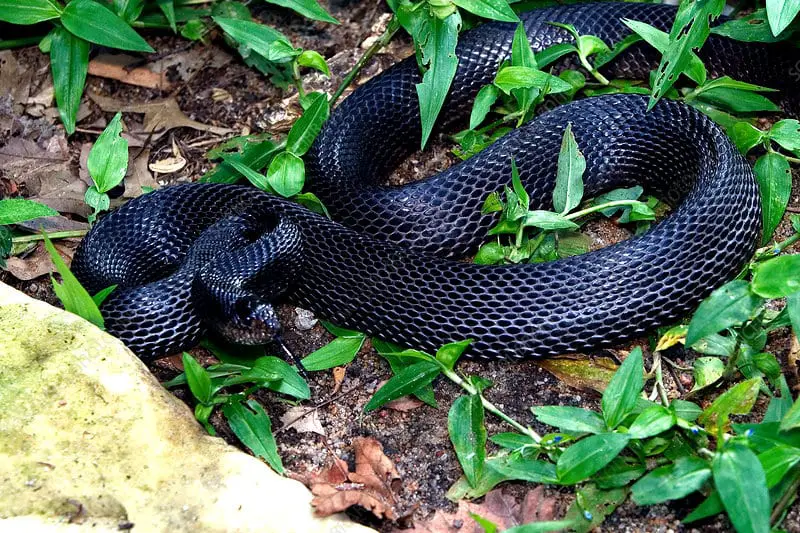
Northern Pine Snake
This is a long snake that measures 48 inches to 100 inches. It has a ground color of white, cream, gray with brown or black blotches. They are known to be a secretive reptile that mostly burrows on the ground that you won’t even detect their presence in the locations where they are common. They are mostly located in New Jersey where their populations are threatened.
Black Pine Snake
This is a thick-bodied snake that measures up to 7 feet long with a small head that is not proportionate with its muscular body. They usually habitat in the roots of different trees in pine forests. They are the only melanistic pine snake that exhibits the colors black, dark brown and brown. Their habitat is highly threatened due to agriculture, timbering, and natural forest fires.
Florida Pine Snake
It is a non-venomous that is from a large family of this species also known as a colubrid snake that is usually seen in the southeastern United States. Compared to other Pine Snakes species, this can be identified easily because of its triangular rostral scale on the face mostly used for burrowing. They are considered polymorphic within their range they have brown or tan blotches in the back with red or brown spots throughout their tail. Their average size is about 4-6 feet but they can reach up to 7 feet long.
Shedding
Like other snakes, Pine Snakes shed occasionally. Days before the actual shedding, expect that your snake’s appearance will change, its eyes will turn blue and its skin becomes duller. Avoid handling your snake in this stage because this is the phase where your pet will become grumpier. Its original appearance would go back and after 3-4 days the actual shedding will take place. Your snake will shed its skin in a single piece that is fragile and can easily be torn.
This shredded skin is usually moist or wet because while shedding your pet’s skin will excrete lymphatic fluid to aid in the shedding process. Make sure that the skin is removed in one go, if it is shedding in patches then there is something wrong with the snake’s ability to secrete fluid or the environment is too dry. Remove this shredded skin from the tank as it may be a breeding ground for bacteria and might cause an unpleasant smell.
Availability- Where to Get One
All the species of Pine Snakes are available in captivity because these are the types of snakes that can be easily handled and maintained. These can easily be seen in different pet shops especially in the United States. You can also get from online shops on the internet where you can choose from different ages.
Since this snake is commonly seen in captivity, some breeders wouldn’t want to pay money just to acquire one. They’ll go in the wild and hunt, however some hunters use aggressive techniques just to catch one which is detrimental to the snake’s health because they can have some bruises, wounds and some scratches.
Captive Breeding
With the attentive care of breeders in captivity, Pine Snakes can easily thrive. As a breeder, you need to prioritize its husbandry and make sure to mimic its natural habitat as much as possible. These are the species that are popular to snake collectors and home breeders because it is easy to tame and maintain. It can live long in captivity if you would follow simple guidelines especially in the feeding process; do not over underfeed them.
It is easier to tame these types of species during their younger years preferably after hatching so that it is easier for them to recognize you as their owner. Your goal as a breeder is to give its basic needs such as proper housing with accessories that mimic the natural environment, proper diet, clean water, light equipment and making sure that the temperature is optimum for them to live.
How to Care Reptile as a Pet
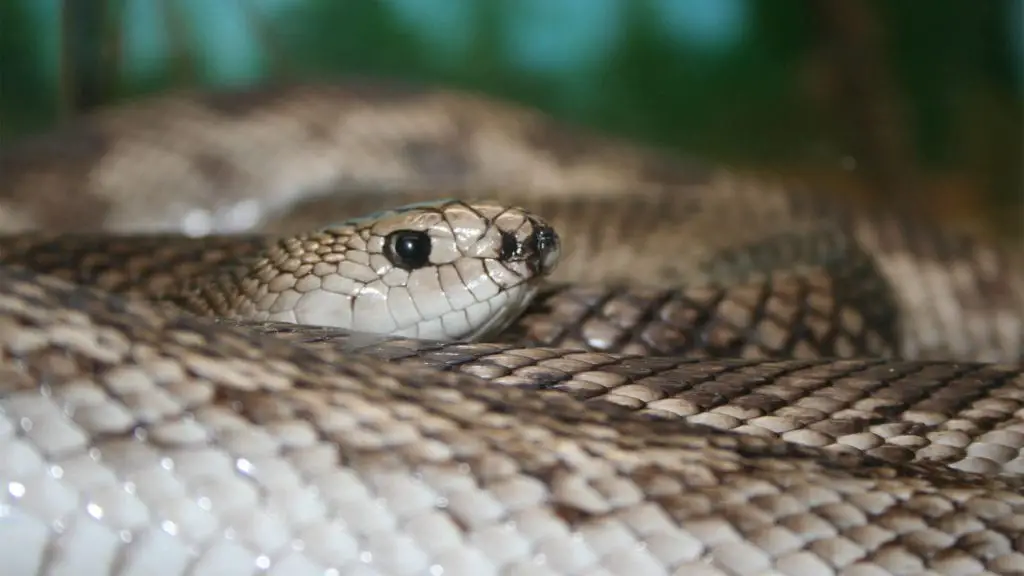
Housing
Pine Snakes has a massive size that is why they need to have a lot of space where they can still move comfortably. The housing or tank that can be used should at least be 55 to 75-gallon tank with a screen or secures the cover. There is a possibility that the snake would destroy its place in search for the way out and find a hiding place that is why it is advisable to place a hide box.
Substrate and Accessories
Pine Snakes are considered as curious animals that like to explore their surroundings, which is why the accessories in the tank should be placed properly and securely. Place a log or bark of a tree where they can bask. The suitable substrate is dust-free beach sand that is placed in a rubber commercial carpeting so that the cleaning and maintenance are also easy.
Food and Water
Your pet will grow fast as long as you would stick to its diet which consists of rodents or poultry. They should be fed at least twice a week, make sure not to overfeed and were underfed them. An indication of a healthy-looking snake is its roundish physical appearance and if you would observe its skin, you cannot see its skeletons underneath its scales.
If it is overweight, it will look fat and the skin is already visible on its scale. If your snake is in the shedding period, make sure not to feed them to avoid regurgitation. They drink a lot that is why place a water dish that always has clean water.
Lighting and temperatures
These reptiles should be kept at temperatures at least 80-85 degrees Fahrenheit. The daytime heat can be achieved through the use of lighting equipment that is in a 12-12 lighting cycle. The temperature should be lessened at room temperature at night. Climbing structures within the housing will help in thermoregulation.
Handling
Take extra cautious in handling them because those that are not used to seeing humans can be nervous and be very aggressive. Their bite can be painful and bloody. Even though you have tamed them, they can be very attentive and active in gathering food since they are voracious feeders that are why check the distance between you and your pet in feeding them. They may wrap their body around your hands but they will not have any force to crush you, it is just an indication that they are threatened by your touch.
Common Sickness and Diseases
Blister Disease
This is an infection on the underneath of the snake’s scales and is commonly due to unsanitary cage conditions especially if they are placed in a too damp or wet housing. If this disease is not cured, it may cause some lesions into your snake’s skin leading to septicemia which is fatal.
It is always advisable to maintain a dry substrate so that your pet will not be prone to skin diseases. Blisters along your snake’s body are the first sign that there is something wrong with their environment so be sure to check the root cause and immediately take it to a veterinarian so that they could give antibiotics to cure it.
Anorexia
This is when you Pine Snake refuses to eat. When they hibernate during the fall and winter season, their eating habits are also affected. Even Though they do not eat during the hibernation period they will still look healthy that is why in captivity if your pet exhibit this behavior and its winter it is just normal but it is within their active months then there must be something wrong so seek medical help.
Parasite Infections
Securing your pet’s housing that even a small parasite can’t come in is just one of the things to consider but it is also important to make sure that whenever you would handle them, your hands should be clean because there is a tendency that dirty hands possess parasites that can be transferred into their skin. If ever you see parasites moving around your pet’s house, that is already an indication of a poor and unhygienic environment. Some of the common parasites are roundworms, ticks, tapeworms, and mites. These parasites can go away easily through proper bathing.
Pneumonia and respiratory issues
This is the most common disease a breeder avoids because this is fatal. Once your snake has pneumonia or other respiratory issues your pet may have a nasal discharge that makes it difficult for them to breathe.
Regurgitation
This is a health condition where your pet vomits the food given to them usually those that have hairs or feathers. They would still try to eat it but will have a hard time digesting these kinds of foods. This would be an indication that your snake suffers from a digestive disorder that is why it needs an immediate medical attention.
Egg binding
During the birth process of females, it is important that all eggs will come out. However, there are instances wherein the egg is too big and it gets stuck in the female’s organ. This is a serious condition because it may eventually lead to sepsis that is fatal.
Preventing Illnesses
The number one cause of these diseases and illnesses is the environment. If your pet is thriving in an environment that is poor and hygienic there is a possibility that your pet’s immunity is decreased. Always keep your pet in a dry and warm environment. It can’t be avoided that the water would spill when they drink water. As much as possible, the dry area of their tank should always be dry because they are prone to skin diseases especially when exposed to wet areas for a long period of time.
When your snake’s skin is exposed to wet conditions it might be a cause to respiratory illnesses or scale rot. The water bowl used for drinking can also be a defecating ground for them that is why it is important to always replace it with clean water. It is important to handle your snake at least once a month so that you could inspect its body to check if there are unusual changes, if you see some unusual changes, seek medical attention immediately so as to prevent worsening its condition.
Conservation Status
There is no federal protection about Pine Snakes at the moment but in other states and regions they are already listed as threatened but there are no laws protecting them yet that is why these species’ populations all over the United States are in critical status. Different forest fires and habitat degradation are the main reasons why their populations are slowly decreasing. There are some private sectors that show some efforts in increasing their population by taking them in captivity for breeding and reproduction purposes, one their eggs hatched, it will be taken in the wild to thrive further.
Economic and Human Impact
Snakes are known to prey on disastrous and unhelpful species like that of rodents so as to help control the increase of agricultural pests. Pine Snake species are popular types of snakes to be kept as a pet, their eggs laid in the wild are commonly taken into captivity either sold for business or as pets. When the Pine Snake is threatened, they can pose harm to humans. They may not have venom, but they can inflict a painful bite. Aside from being a pet and a thing for industrial uses, these types of snakes are commonly eaten especially in some cultures where they believe that their blood and their meat have the ability to cure some illnesses.
Facts about Pine Snake
- They are considered as gentle giants because they do not pose harm to humans unless you seem so threatening as you go near it.
- They may not have a unique defense mechanism but they are alert and attentive enough to defend themselves to possible predators.
- They always spend a portion of their morning to bask on the sand or logs to help themselves stay warm during at night.
- They have a great help for the environment by keeping the ecosystem balance. They eat rodents that are known to be a pest, especially in the agricultural sector.
- They only stay outside longer and be sociable during the summer and autumn season when it is about time for their mating and reproduction.
- These snakes are good at detecting if you are tensed in touching or handling them. If they sense that you are not comfortable in holding them they may also be shy and feel a bit stressed.
FAQ Section
Do pine snakes make good pets?
They can be an excellent and easily maintained captive pet. This is not a pet for everyone especially for beginners because they have a large size that requires big and spacious tanks and they are also a voracious eater.
Is eating snake good?
These kinds of non-venomous species are often killed to make wine or to eat their make in the belief that it can cure different kinds of human diseases. Snake’s meat has a smooth texture like that of chicken’s meat and they are also enriched with protein and fat. Some cultures believe that their skin and blood treat human’s illnesses and other health condition.
Do Pine Snakes climb trees?
During their active months, they are usually found climbing in low bushes or trees to bask and to find prey. They also climb in a tree to see their prey below the ground before they attack.
Are they Dangerous?
They do not possess venom. When they bite you, you may experience pain and bloody wound but it is not fatal but it still needs medical attention to avoid complications. It is humans that cause a threat to them because of the loss of their natural habitats and continuous hunting for food or captive pet.
Can they be breed with other snakes?
Yes, they can be bred with other snake species. In captivity, Pine Snake species are bred with each other with the goal of producing more appealing and colorful offspring. There are studies that when you breed them with other snakes, chances are their offspring will have low immunity to fight different kinds of diseases or illnesses.
Are they bad for your yard?
They are burrowing mammals that is why the structure of your landscape can be destroyed but they prey on pests that will not only damage your plants but can also do harm to your household. If taken in captivity, don’t take them into your yard even for just a few minutes because it may burrow or hide.
Do Pine Snakes eat other snakes?
Yes, they prey on small snakes and eggs that are about to hatch on their burrow.
How do you tell if a Pine Snake is a male or female?
The male Pine Snake has hemipenes that are located below the cloacal (vent)on the opening along with their tails. This sex organ is housed inside the scale of the snake making it not visible at a glance while females do not have this organ. The tail of the males tends to be longer than females.
How often do Pine Snakes eat?
They should only be fed at least once every two weeks. The amount of food given to them should be proportionate with their age and size. Be careful to give them the proper diet to avoid obesity and overweight.
Can a multiple Pine Snake stay in one housing?
In captivity, it is not advisable to place two or more snakes in one housing because they only interact during the mating season. If you prefer to take care of more than one snake, make sure that they can move well on their housing with proper spacing.
Is it necessary to place “hiding” structures on their housing?
Snakes are burrowed a lot. If the substrate used on their housing is not enough they will try to escape from their cage to find a hiding place. To release the tension from your pets, it is necessary to place a hiding box for them to rest on.
How frequently do Pine Snakes shed their skin?
During their younger years, expect that they will shed a couple of times a year but when they reach the maturity stage they will only shed at least once a year. If the snake is a bit stressed, there may be a delay in the usual time of their shedding.
How do they cope with the harsh environment during winter?
During the harsh weather conditions of the winter season, you’ll often see them hibernate in their burrow. They would use their active months to eat and get enough heat to be stored in their bodies so that when winter comes, they can survive for how many months.
Why are they called Pine Snakes?
They are called Pine Snakes because their natural habitat is in the Pine forest located in the United States of America.

